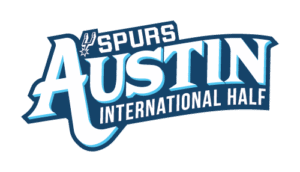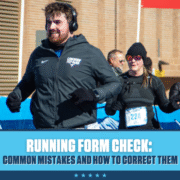Strength Training for Runners: Build Power, Prevent Injury, and Boost Your Performance
When you think about training for a half marathon, you probably picture long runs, hill repeats, and tempo workouts. But if you want to run strong, stay injury-free, and crush that net-downhill Spurs Austin International Half course, there’s one element you shouldn’t skip: strength training.
Building a strong foundation doesn’t just improve performance—it helps you maintain good form, power through fatigue, and tackle every mile with confidence. Whether you’re chasing a PR or training for your first 13.1, adding strength work 2–3 times per week can make all the difference.
Below, we’re breaking down key exercises that target the major muscle groups runners rely on most. No fancy gym required—just a little space, consistency, and focus.
Lower Body Power: Build Strength Where It Counts
Your legs do the heavy lifting, so let’s make sure they’re ready to handle the miles.
1. Squats
Targets: Quads, hamstrings, glutes, and core
Why they matter: Squats improve leg drive, stability, and endurance—helping you power up hills and stay strong in the final stretch.
How to:
- Stand with feet shoulder-width apart
- Lower hips down and back, keeping knees behind toes
- Drive through your heels to return to standing
- Do: 3 sets of 12–15 reps
2. Forward Lunges
Targets: Glutes, hamstrings, quads
Why they matter: Lunges build unilateral (single-leg) strength, mimicking your running stride and improving balance.
How to:
- Step forward with one leg and lower until both knees are at 90°
- Push off your front foot to return to start
- Do: 2–3 sets of 10 reps per leg
3. Calf Raises
Targets: Calves, ankles
Why they matter: Strong calves help absorb impact and improve push-off power.
How to:
- Stand on the edge of a step with heels hanging off
- Lift heels as high as possible, then slowly lower
- Do: 3 sets of 15–20 reps
Core Stability: The Key to Strong Form
Your core is the control center of your stride. A strong core improves posture, balance, and running economy.
4. Plank (and Variations)
Targets: Abs, shoulders, back
Why they matter: Builds full-body stability and helps maintain upright posture during long runs.
How to:
- Keep elbows under shoulders and body in a straight line
- Engage your core—no sagging hips!
- Do: 3 sets of 30–60 seconds
5. Dead Bugs
Targets: Deep core muscles
Why they matter: Trains coordination and keeps your pelvis stable—especially important on a downhill course.
How to:
- Lie on your back with arms and legs in the air
- Lower opposite arm and leg toward the ground, keeping your back flat
- Do: 2–3 sets of 10 reps per side
6. Glute Bridge
Targets: Glutes, hamstrings, lower back
Why they matter: Activates and strengthens the glutes, preventing overuse of quads and improving stride power.
How to:
- Lie on your back, knees bent, feet flat
- Lift hips until body forms a straight line
- Squeeze glutes at the top
- Do: 3 sets of 15 reps
Bonus Tip: Make It Count
You don’t need to spend hours in the gym. Two 20–30 minute sessions per week is enough to see improvements in strength, stability, and performance. Pair these workouts with your weekly mileage, and you’ll show up to the start line ready to fly.
Remember: stronger muscles = faster, more efficient miles. Start small, stay consistent, and your future self (and finish line photos) will thank you.
Ready to take your training to the next level? Add these exercises into your weekly plan and feel the difference by race day!



